A feature of bagpipes from around the rest of the world
- and
more specifically off the battlefield - is that the pipes maintained
their links not just with other instruments, but also with dancers
and/or singers.
The "national costumes" seem to be characteristic of this type of
event, whether or not the musicians would actually wear them for
performances at home. |
 |
| Having mentioned that "other instruments" are played
with the
bagpipes, it's only fair to point out that other cultures have
traditions of a range of instruments not found in orchestras or
mentioned in school music lessons. The national muic museum in Prague
has an amazing selection of fiddles, many of which seem similar to
Norwegian Hardanger fiddles - with a second set of strings running
under the fret board. These Viol d'amour, or baritone violins (there
seemed to be grey areas in the classification, but then I don't speak
Czech) often had five melody and four drone strings or more. Well worth
a visit if you're there, but make sure you go UPSTAIRS - downstairs was
all classical stuff when we were there. |
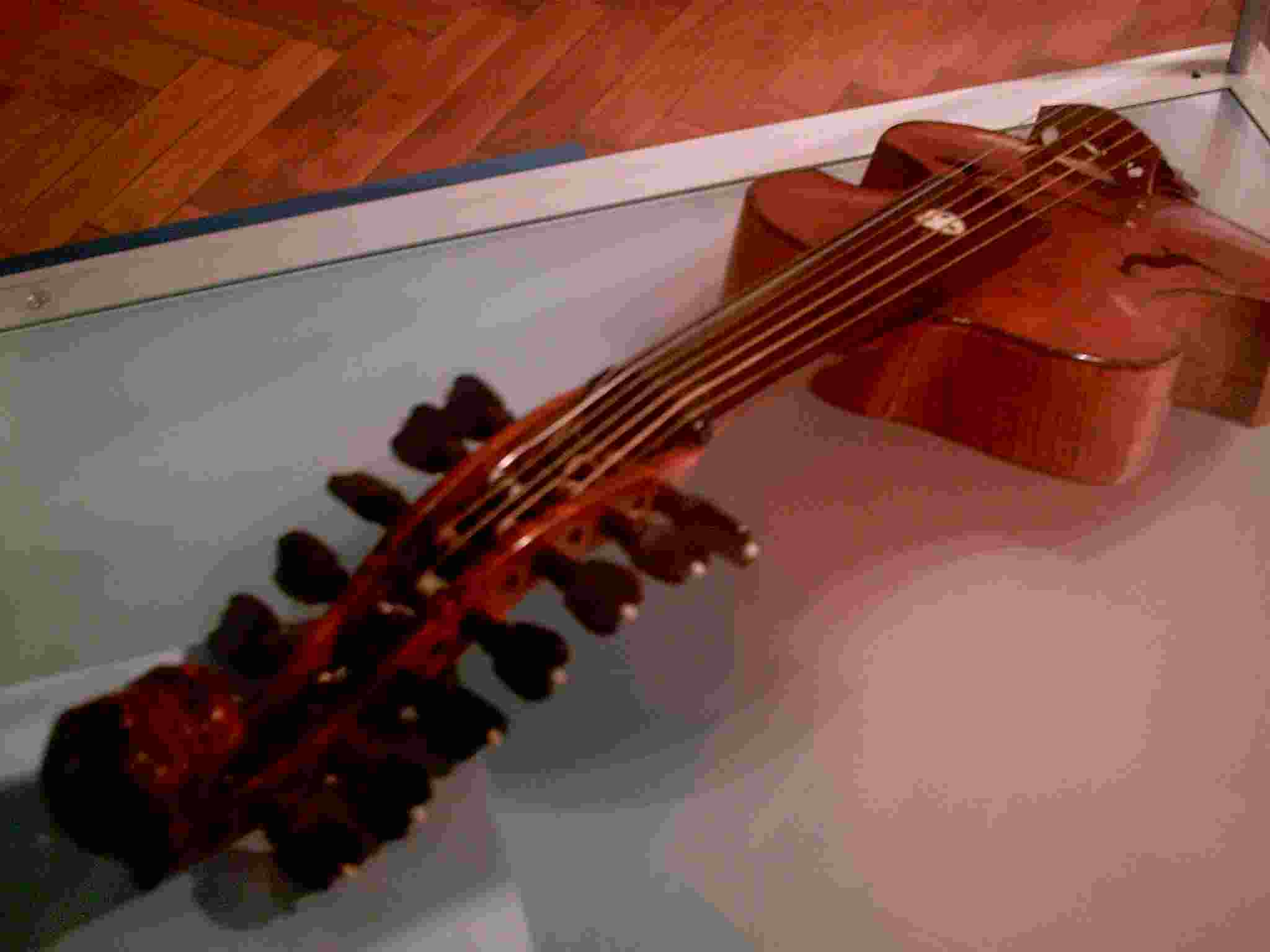 |
| As an aside, when it comes to travelling in the Czech
Republic, public transport is actually very good. If you use the
motorways, you will need to buy a permit and if you use the rest of the
road system you'll be fine so long as you look out for roadworks and
potholes. If you go to Prague, though, you'll find parking is nearly as
bad as in London, except that the option of the buses, trams and trains
actually works. This is a shot of the Metro system which we used just
for the sake of it as we had bought tickets to last us for the day. |
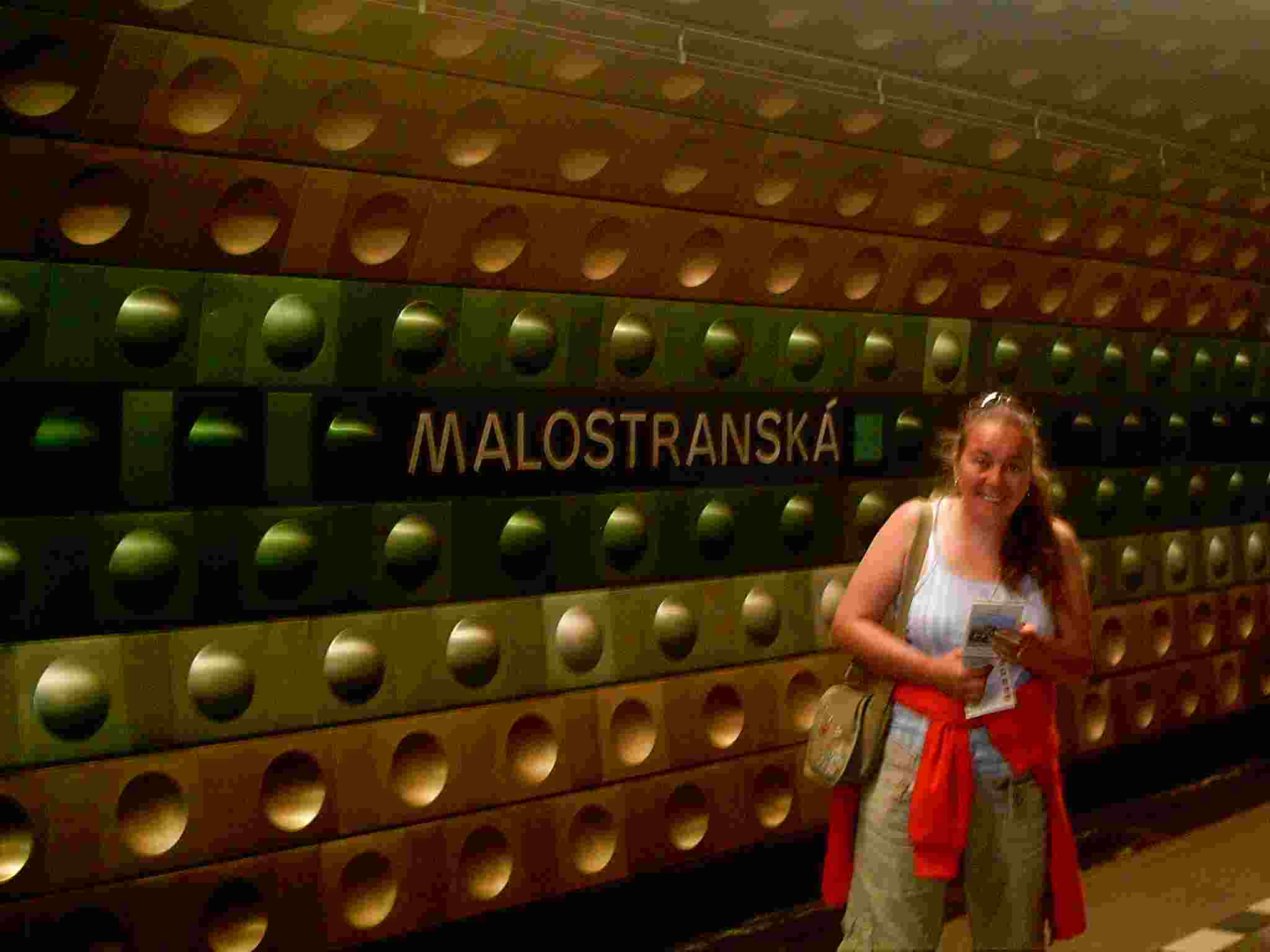 |
| The festival itself is held in the old castle in the
middle
of town, although there are other venues, such as the Arts Centre (Dom
Kultur), Summer Cinema (Letzni Kino), the local cinema and outside the
shopping centre. The building on the left house the Bagpipe Museum and
the restaurant is through the arches in the corner. There is also a
late night bar cum beer cellar where this year a half litre of beer
cost 15 Kr. The exchange rate was about 42Kr to the pound. Shorts were
about the same. Did I mention Becherovka ?? |
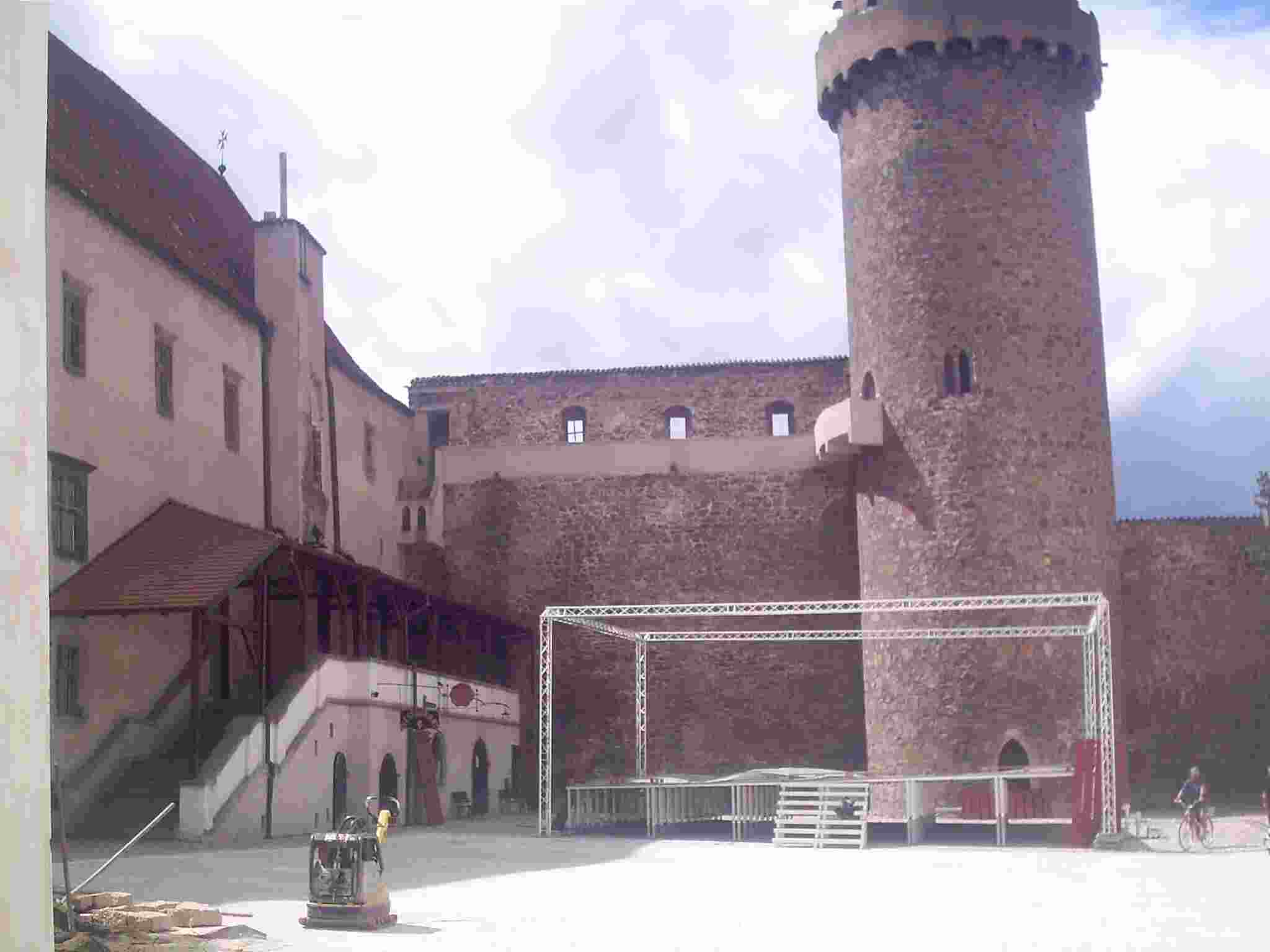 |
| The event begins with a procession through the town to
the
catle by all the participants. They stop and perform every hundred
yards or so, which means that the trip of three quarters of a mile
takes about two hours altogether ! To be honest, if you could see all
of these performances, you wouldn't see much more by going to the
individual shows, but hey, you're on holiday, the beer's good and cheap
and a lot of the music is really good, if not exactly what you might be
used to. |
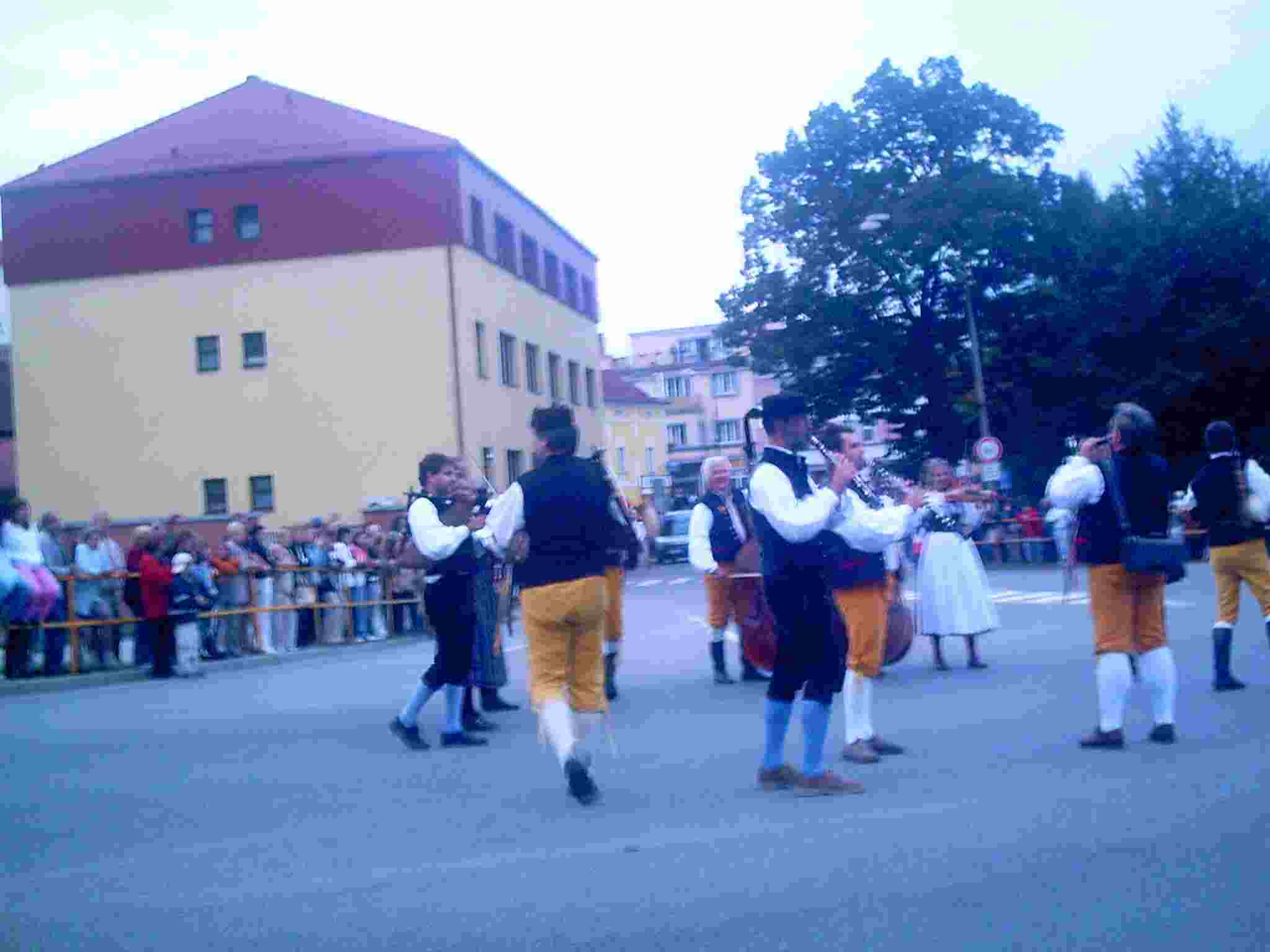 |
| There is a lot of talk about instruments being revived,
particularly bagpipes, across Europe. It was noticeable that
there were quite a number of local bands which had students who were
learning at school or with youth groups. I couldn't pronounce, let
alone spell the town this group were from, but they were from a place
about thirty-forty miles away if I heard correctly. |
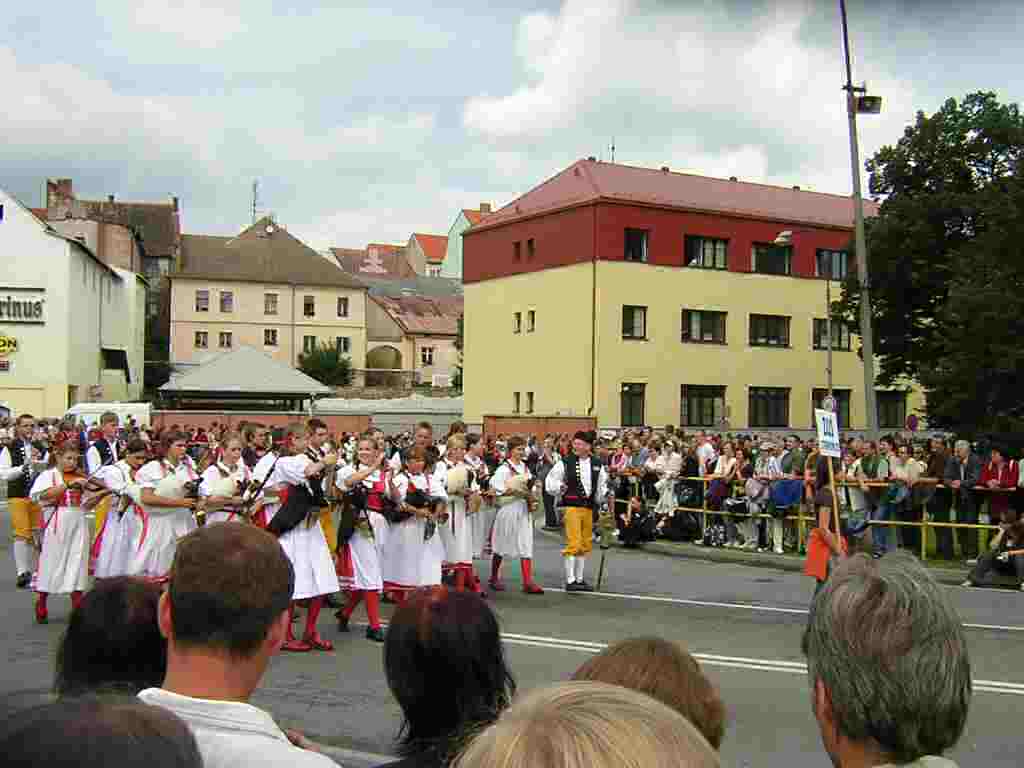 |
| I would have had some really good pictures of this
group from
Turkey if only my camera batteries hadn't been dying (Doh!) They had a
crowd of about twenty five enthusiastic dancers who showed that it's
not necessary to dance traditional music slowly .. Yes I suppose that's
a bit of a dig at some morris dancers I know - you can see that where
dancing has a social function and single men and women are involved the
dancing is unlikely to be sedate. |
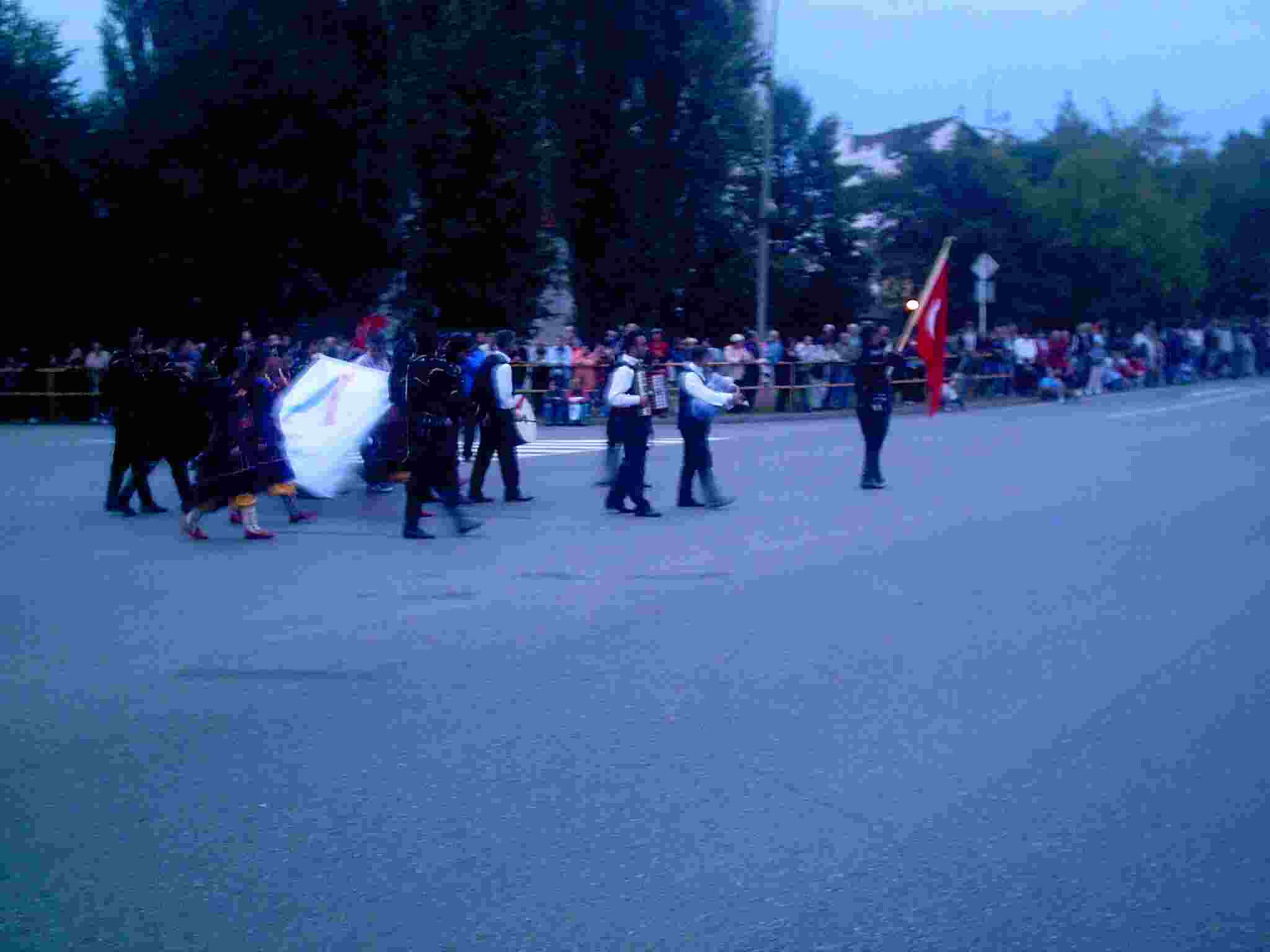 |
After the Turkish troupe, this Slavic group provided
the
opposite extreme. The dancing was much (much) slower, but with humour
too, such as the dance which portrayed a warring couple, which ended
with all dancers twirling slowly in time to the music clutching their
ankles. Actually it bordered on the bizarre, with a discordant pipe
pitch which was on a quite unique scale.
I wondered if it didn't provide one of the truest views of traditional
rural music, although that might be condescending and pandering to
inapprpriate stereoypes. |
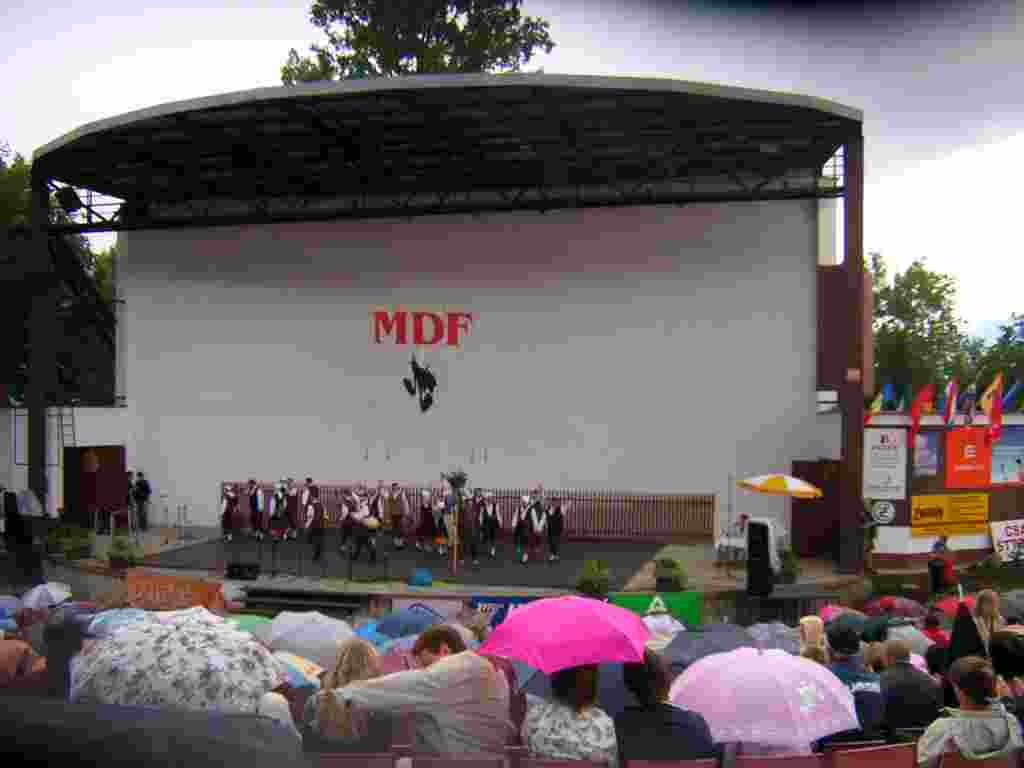 |
| This group, Hailander appear every year and apparently
have
quite a following in their native Holland where they seem to enjoy some
commercial success. They have a stage show which goes down well with
the crowds and they certainly have a laugh in the bar afterwards.
Listening to them as a highland piper, however, there seemed an almost
total disregard for regular blowing which meant the pitch rose up and
down continually. They didn't seem to feel it mattered and they're not
playing GHB. It seemed rather too cavalier attitude to the music to me,
together with extremely loose versions of melodies. Pleasant enough,
though. |
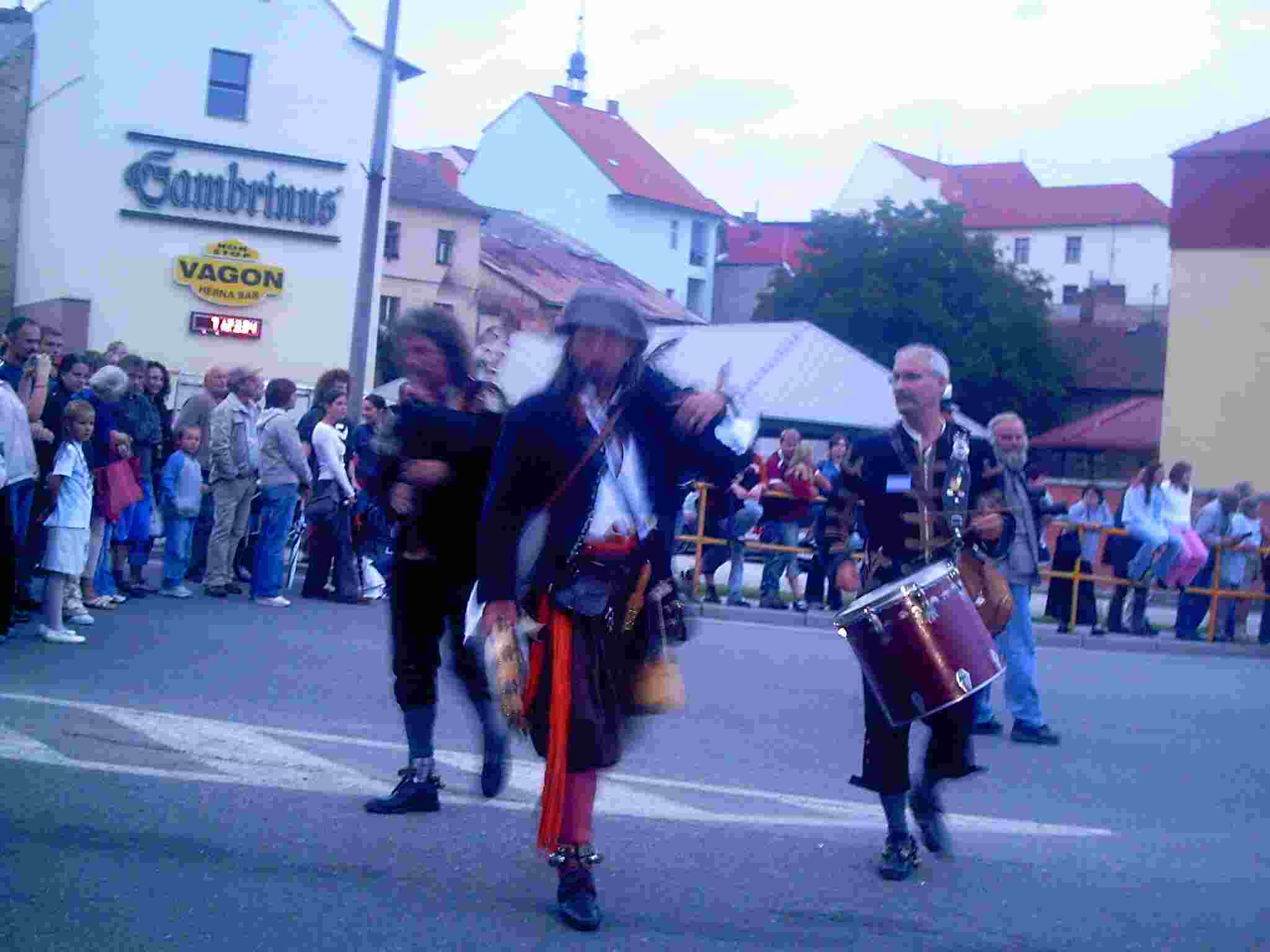 |
This band from Austria haad a very classical bent with
an
emphasis on singing. It was a very difficult take on music, where
bagpipes are just one more instrument in an ensemble and the repertoire
would be more easily recognised in a classical/baroque concert than a
pub or dance hall.
Their music wasn't for me, but I was glad that there were people who
wanted to play it, if that makes any sort of sense. |
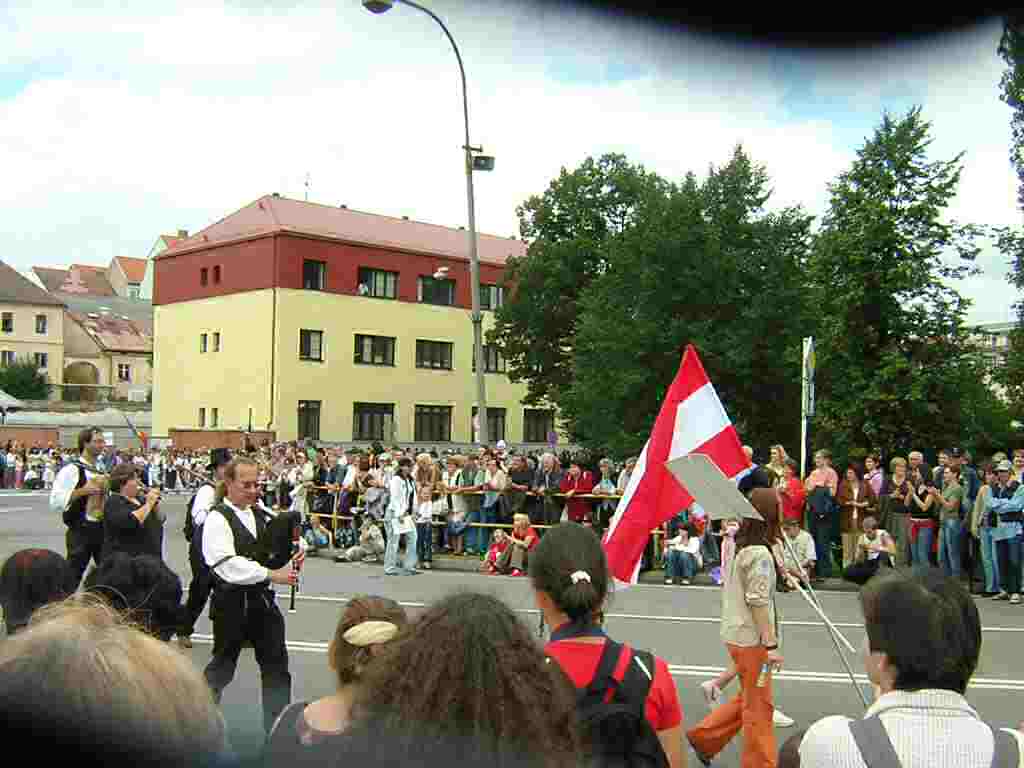 |
| I wish I had better pictures of this band, the Real
Banda de Gaitas de Ourense.
They have taken part both times I have been
and put on a really good show, as well as having a fine sound. Their
pipes are slightly different to highland pipes, as instead of having
two tenor drones, one is of a slightly lower pitch producing overtones
which are different to those pipes which most of us will be familiar
with. As well as pipes they have dancers and a lively percussion
section which works wel, although I usually detest tambourines. The
only question is why their female players seem to dressed as nuns ?
They do look fantastic, though. |
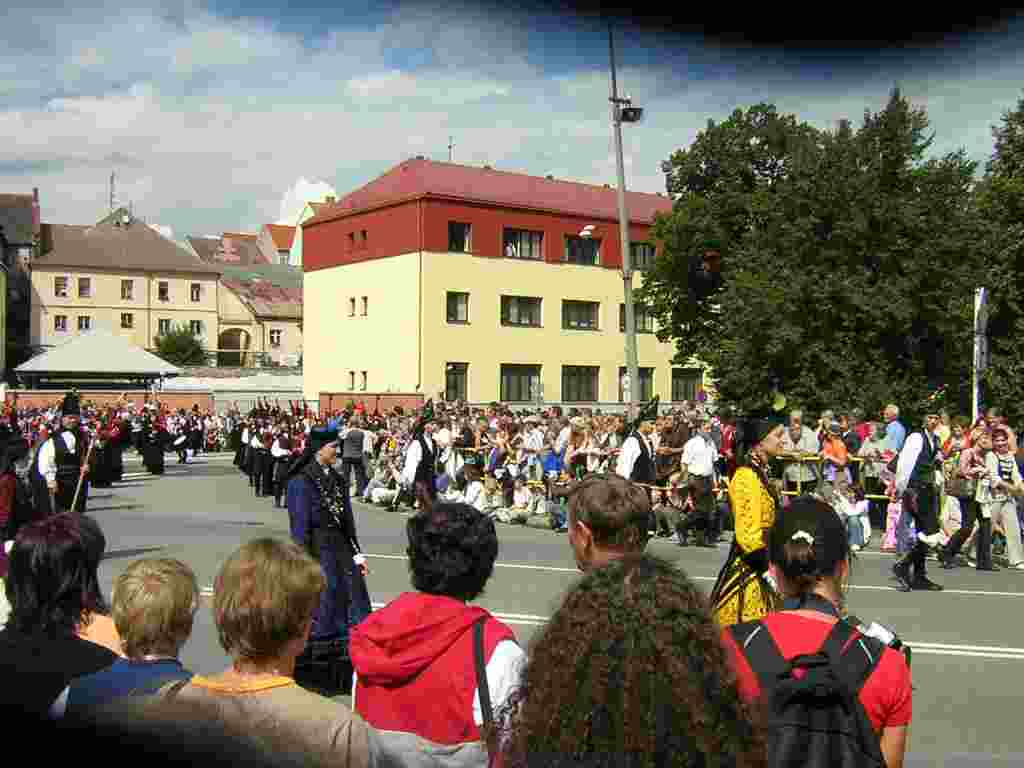 |
Here the Real Banda are joined on the stage of the
Summer
Cinema (Letzni Kino) for the grand finale by the Neilston and District
Pipe Band. These are also stalwarts of the festival, having come for
the past twenty years or so. Unfortunately most of my pictures of this
group are in the bar and it would be impolite to publish those. They
were a good laugh though and we shared a few tunes.
A short while later they were joined by Kevrenn de Brest St Mark, a
French band who combined pipes and drums with bombards. By this time my
camera had died again. It is possible to use solar lights to recharge
camera batteries, but not completely. |
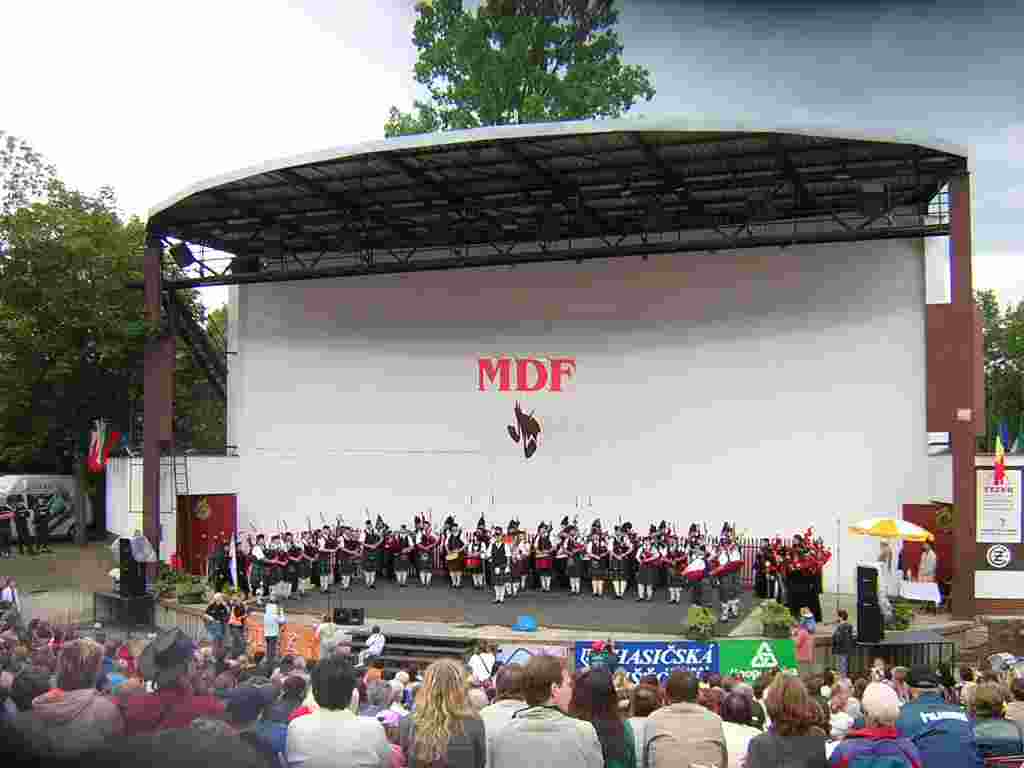 |
Not exactly interesting to anyone who only wants to see
bagpipes, but this is a record of our holiday and this is how we
travelled. The round trip from London through Germany to the Czech
Republic was 2,100 miles in total and the bike, a Yamaha XVZ1200
Venture Royale gave no trouble at all.
The trailer tent is a Raclet Minto and really does need an over-run
brake for our purposes. Braking distances were a little like "Can you
see that car ahead?" "Yes ?? Quick start slowing down !!" Maybe I
exagerate. |
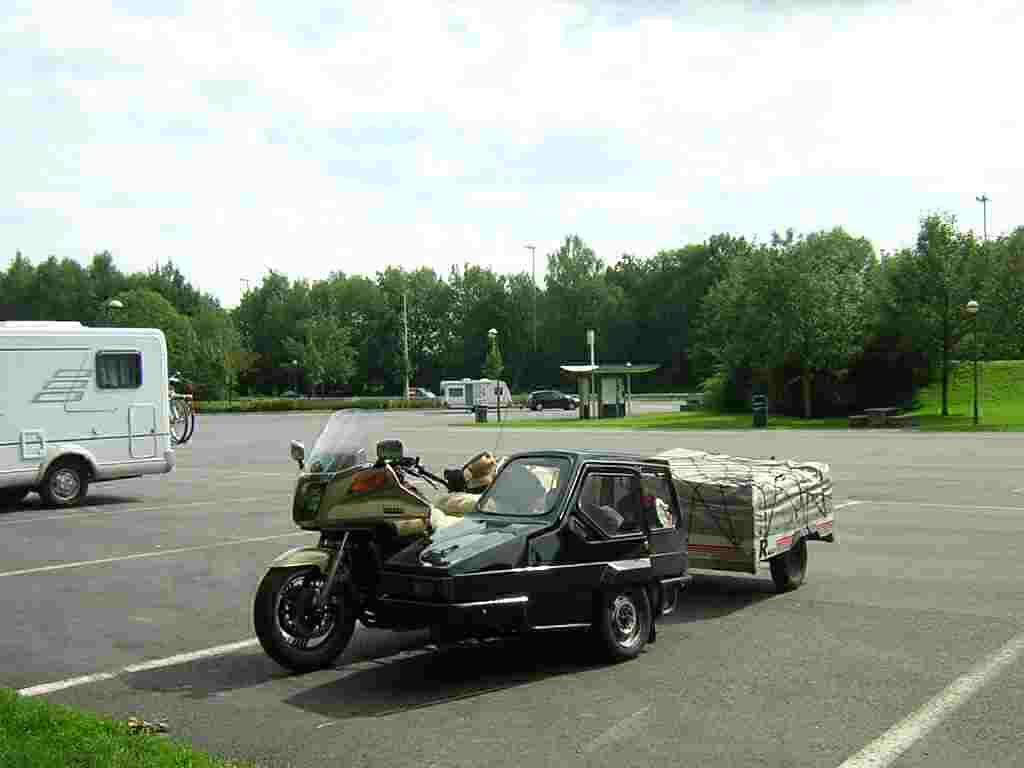 |












